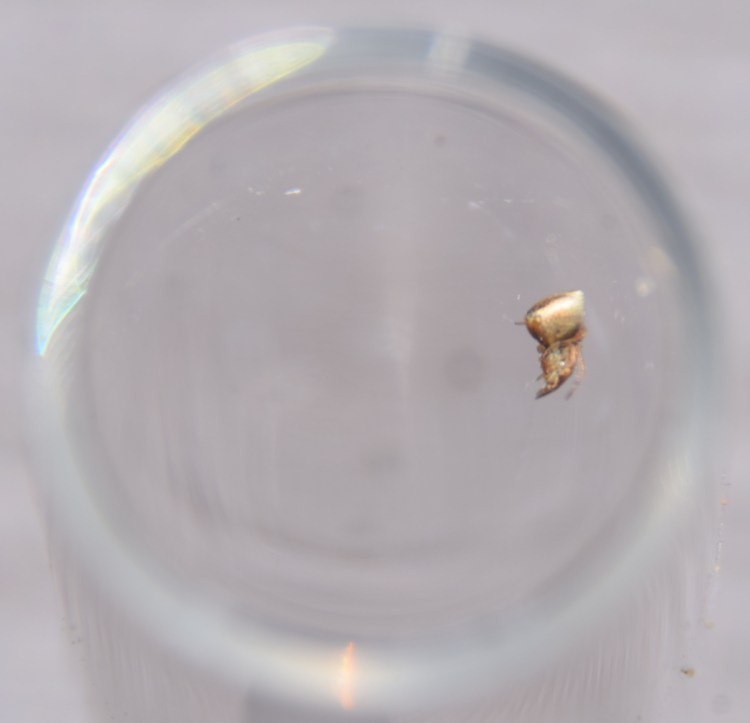My fascination for spiders started 10 or 12 years ago amid a general self-generated awakening to the details of the woods.
I was head-first in flower, tree, bird and bug facts I had never taken time to really sort out because the feelings of awe always seemed more important than the mastery of names. But the names started to feel like a layer of the different kinds of awe — a flock of Canada geese reflects one facet of cosmic beauty, a pair of blister beetles on a rose petal another. These birds and bugs, I was thinking, have names that might be illuminating.
It turned out to be complicated. Branta canadensis is an object; a flock of geese rising over the lake in still evening air is something else.
Another thing was the population of black and yellow garden spiders that had set up their orb webs in the brush at the Unity park. If one noticed you getting too close, she started bouncing her web, as if she was stuck to a vertical trampoline. Maybe the bouncing web was a threat, or maybe a diversion, or a blurring tactic, who knows exactly what she thought she was doing.
Whatever else was happening, the spider was: 1. watching me and 2. thinking.
Now, to remain grounded in the real world of natural fact, you have to immediately realize that what the words “watching” and “thinking” refer to in a spider’s experience can’t possibly be the same as what they refer to in a human’s experience. You can see that the garden spider is small, it lives in a web, it’s constantly at risk of being attacked and swallowed by huge beings from above or below, and it visits its own shocking savagery on smaller beings yet. A spider takes completely different meaning from its surroundings than humans do. But it is, nonetheless, meaning.
Jumping spiders, I soon discovered, have much better eyesight than garden spiders. When you encounter them, they look right at you in ways the garden spiders can’t. Dimorphic jumping spiders (Maevia inclemens), in a study, reacted to videos of prey and potential mates as if they were real. It’s not known if a spider can recognize you personally, but in other studies, bees learned to distinguish between human faces. And jumping spiders watch you.
Spiders communicate with each other. For example, mated cellar spiders send vibrations through web silk that are secret messages — “It’s me, don’t eat me!” Dewdrop spiders send vibrations that trick other spiders into coming out of their own webs to be attacked and eaten. Spiders detect sound waves, too, and process them to extract information about their surroundings — meaning that in their own way, spiders hear.
You might think their brains are too small to be generating anything like what we call “meaning.” But recent theories of mental capacities suggest that it’s not the number of brain cells that matters in intelligence; rather, the proportion of the brain’s physical size to the body’s physical size is a better indicator of a being’s relative intelligence. Crow brains are much smaller than chimpanzee brains, but studies indicate crows are every bit as clever as chimps. Some species of orchard spiders and jumping spiders have brains so big that they spill down into their body cavities and legs early in life, when they’re still spiderlings.
What are the upper limits of a spider’s sentience?
Some engineers in Great Britain taught regal jumping spiders (Phidippus regius) to leap between platforms so they could observe the mechanics of the spiders’ leg motion; the training, interestingly, did not involve food bait. The spiders took a challenge and solved a problem. Somehow, the spiders think. Whatever that means.
Studies of a species of velvet spider native to southern Africa showed that traits such as boldness, shyness and task specialization within spider social structures varied from individual to individual in changing circumstances. Other studies on wolf spiders made similar findings. Meaning that some spiders, at least, have individual personalities.
We can’t get carried away with this and start speculating about spider philosophers meditating in the brush at the park — that’s science fiction (Adrian Tchaikovsky’s novel “Children of Time,” for example). But we can at least take seriously the idea that sentience has many more facets than only the ability to reason abstractly and then talk about it. Big brains, complex webs. Spiders are having experiences we can probably never understand, the same way we’re having experiences they can never understand.
My wife, Bonnie, loves her backyard experiences of nature’s cosmic beauty. She likes to drive the back road through Thorndike to see the Canada geese drift on the still water of a hockey-rink shaped pond there. Mysterious, they perennially are, beautiful. She’s not interested in their scientific name. But by what lake’s edge or pool will they build after they fly away, and what will that family’s life be like?, she wonders.
The geese seem almost human to her. “They’re like the best part of people, and with wings,” she says.
Spiders are a different story. Strange. Alien-looking. Threatening.
But they’re just making a living, I always say, like us, the geese, and everybody else, and the vast majority of them aren’t the least bit dangerous to humans.
My words avail not much.
“They give me the creeps,” she says.
“They’re just humans in monsters’ bodies,” I say.
“Anyway, thank goodness they’re small. Who knows what they’d be thinking about us.”
Dana Wilde lives in Troy. You can contact him at naturalist1@dwildepress.net. His recent book is “Summer to Fall: Notes and Numina from the Maine Woods.” Backyard Naturalist appears the second and fourth Thursdays each month.
Send questions/comments to the editors.



Comments are no longer available on this story